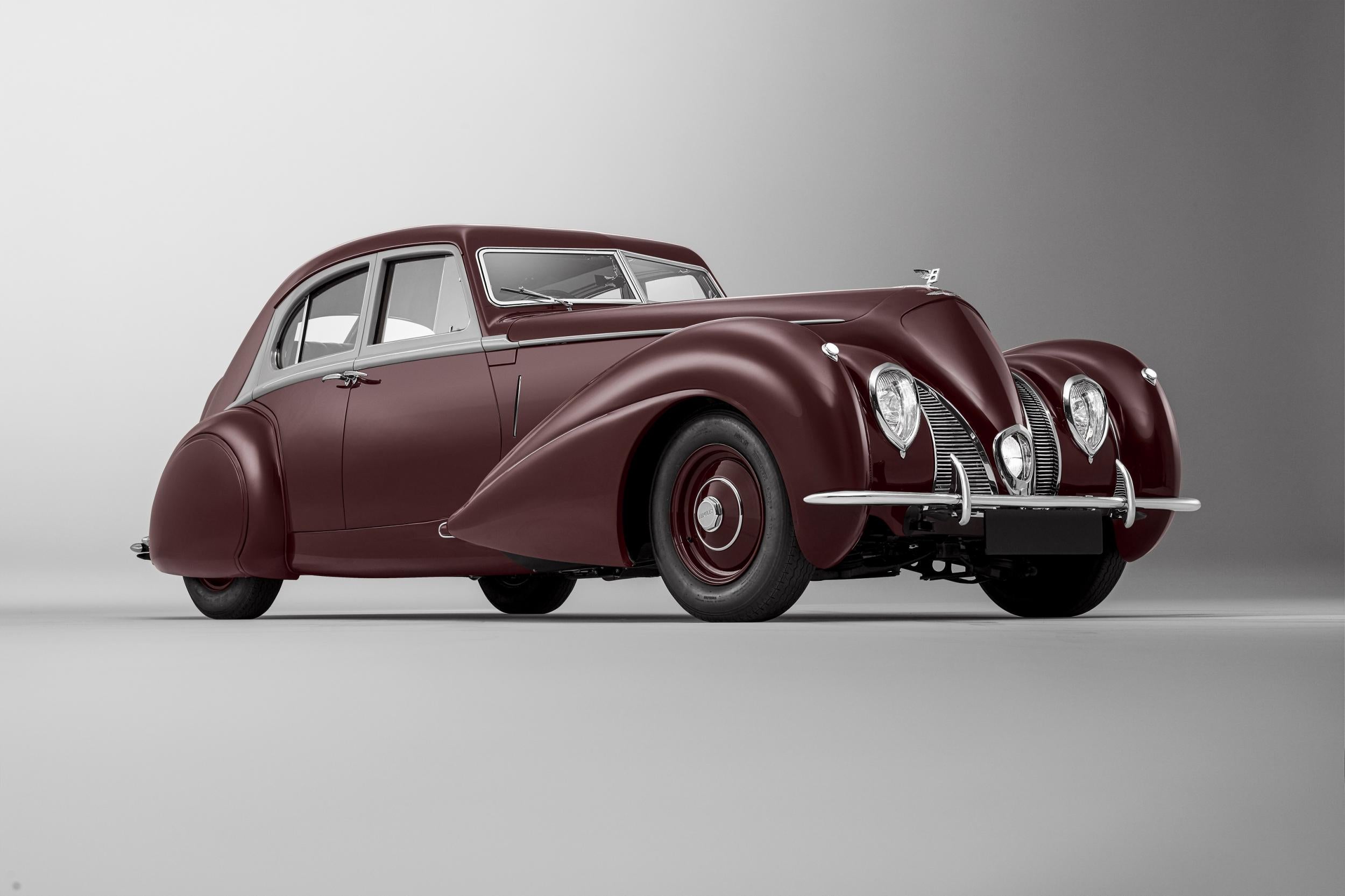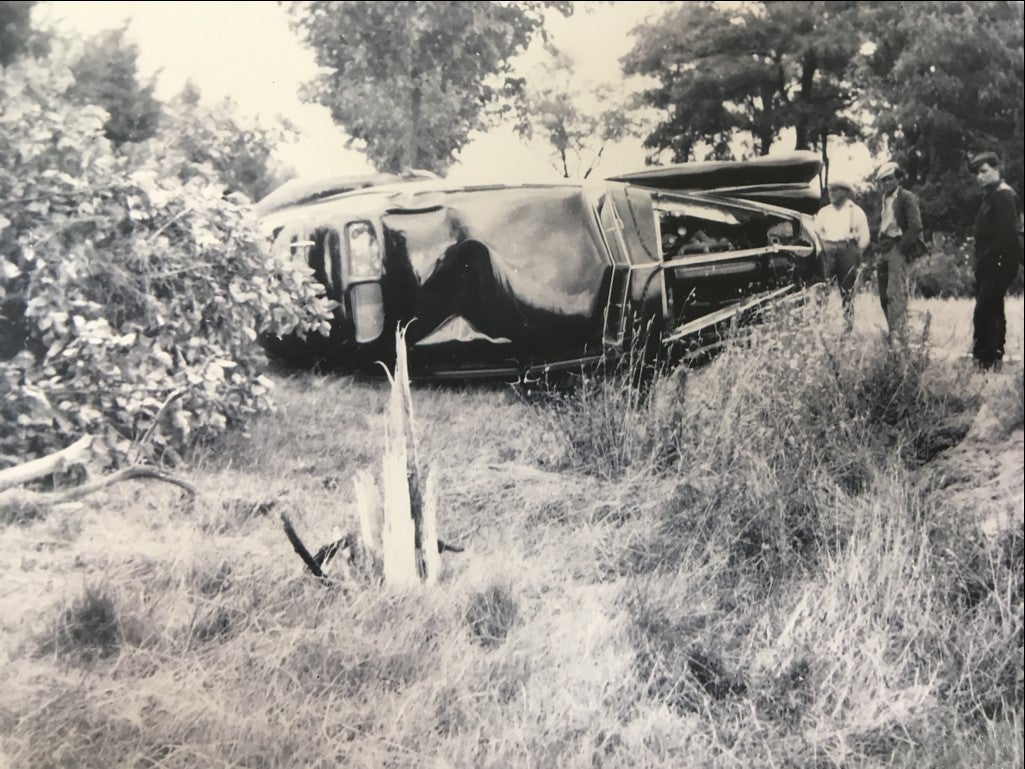Bentley re-born: Behold the mesmerising 1939 Corniche
Designed 80 years ago but never put into production because of the outbreak of war, Bentley’s mythical convertible has been recreated by skilled artisans and technicians

It is quite an audacious move, for quite an audacious car.
The Bentley Corniche convertible of 1939 was due to go into production that October, except that two things went wrong. First, as you might guess from the year, the timing wasn’t great. Second, the prototype was crashed during testing in France, in August 1939. Sent for repairs, the chassis made it home to the Bentley plant in Derby, but the bodywork was destroyed in a bombing raid, and was never seen again.
Until now.

Marking the 80th anniversary of this mesmerisingly beautiful vehicle, and the century of the Bentley marque, the firm has built a one-off example of the original Corniche – which must qualify as the longest development phase in the history of car design.
Using original technical drawings, photographs and the technical parts that did make it into other Bentleys of the time, Bentley’s Mulliner customising and coach-building team has been set to work. They have had to use all their traditional skills to revive the old design, and the images released certainly suggest that they have acquitted themselves magnificently. The car is due to be presented “in the metal” at the at Salon Privé in September and then join the Bentley heritage fleet for display at events and exhibitions around the world.
As can be seen, the 1939 Corniche reminds the brand’s fans that it hasn’t always been about “traditional” styling and that famous radiator grille. This was a thoroughly futuristic, streamlined and aerodynamic Bentley, built, like Bugattis, Mercedes-Benzes and Hispano-Suizas of the time, to take its fortunate occupants across continents, at speed and in style.

Thus, the styling of the Corniche was a radical step forward from the traditional Bentleys of the 1920s and 1930s, and some of the lines made their way into post-war models from the R Type Continental right on to the revived Continental GTs of the 2000s.
The Corniche project goes back several years and involved work by volunteers from the WO Bentley Memorial Foundation and the Sir Henry Royce Memorial Foundation. It was then brought in-house by Bentley chairman and chief executive Adrian Hallmark, who asked for it to be completed in time for this year’s centenary.

Mr Hallmark praised the achievement: “The 1939 Corniche was a clear step in Bentley’s design language which is evident when set alongside the later and now iconic R Type Continental. It is a pivotal car in the history of Bentley, demonstrating that even then, this great British marque was at the cutting edge of design and technology.
“Mulliner’s stunning recreation of the Corniche clearly demonstrates our skill in restoring the greats from Bentley’s back catalogue as well as making beautiful personalised modern Bentleys.”

The project naturally fell to the Mulliner division, where since the 1970s one-off cars have been built for discerning collectors and royalty, including two state limousines for the Queen manufactured in 2002, at the time of her golden jubilee. Today, production models are adapted and built to particular customers’ exacting personal specifications.
“It’s been a fantastic team effort,” adds Stefan Sielaff, design director at Bentley and director of Mulliner. “We have highly skilled craftsmen within Mulliner and around the rest of Bentley Motors, and they all have massive pride in what they’ve achieved with this car.”

The Corniche will make its first public appearance at Salon Privé at Blenheim Palace between 5-7 September and will join Bentley’s Heritage fleet, which already includes WO Bentley’s 8-Litre and the Birkin Team Blower, to be used and exhibited at events around the world.

The project had its very earliest origins in Derby, with volunteers gathering information and parts to assemble the chassis. Bentley Motors provided an injection of funds, and work started on the ash frame and aluminium bodywork with coachbuilders Ashley & James in Lymington, Hampshire. The body was created from the outline drawings given to the project by the family of the car’s original designer, George Paulin.

The project to re-create the Corniche was overseen by a team of four: Ken Lea; Robin Peel, head of heritage; Ian Broomhall, Mulliner operations manager; and Glyn Davies, Mulliner special projects leader.
The Bentley Motors bodywork team, where panels can still be hand-formed, helped with final detailed finessing of panels; the paint laboratory spent many hours producing colour samples of the main body colour of Imperial Maroon and the side flash of Heather Grey from the limited descriptions available; head of interior design Darren Day and his team produced CAD designs for the seats and door trims derived from detailed historical research; and the Mulliner trim team worked from the designs to create a period-appropriate interior in typical Vanvooren style, using the correct Connolly Vaumol hide, West of England cloth and the carpet from a roll discovered stored away on site.

In the Mulliner workshop, master carpenter Gary Bedson devised a steam booth to allow him to bend sections of wood for the interior window surrounds, often spending over an hour wreathed in steam just to attain a few degrees more curvature. Other team members worked hard to recreate the front grille, using modern computer-assisted design to analyse airflow and design each individual slat, which were then hand-built by skilled metalworkers over a period of three months.

Six Mulliner apprentices, one of whom even created an authentic tool tray for the boot of the Corniche, were also involved throughout the car’s time with Mulliner.
Worth the wait.
Join our commenting forum
Join thought-provoking conversations, follow other Independent readers and see their replies
Comments